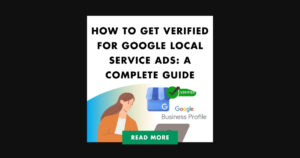Elevate Your eCommerce Advertising Strategy for Success
As eCommerce businesses continue to thrive in the digital age, mastering the art of eCommerce advertising is more important than ever. With the sheer number of marketing strategies available, business owners can find it challenging to identify which approaches will be most effective for their eCommerce advertising.
In this blog post, we’ll delve into various aspects of eCommerce advertising that are essential for driving sales and customer acquisition. We’ll explore how you can maximize your reach with Google Ads, generate more leads through targeted ads on social media platforms like Facebook Business, and measure your success using detailed analytics tools.
Additionally, we’ll discuss how easy setup processes allow even novice marketers to quickly get started with these powerful advertising techniques. Stay tuned as we guide you through creating a comprehensive marketing strategy that targets potential customers throughout their buyer’s journey and enhances their overall experience with your brand.
Table of Contents
Maximize Your Reach with Google Ads
Google Ads is an effective way to reach potential customers and increase your eCommerce business’s visibility. By targeting your ads accurately, you can ensure that the right people are exposed to them at the most opportune times. This not only helps in driving more traffic to your online store but also improves customer acquisition rates.
Achieve Better Brand Awareness
In today’s competitive digital marketing landscape, it is crucial for eCommerce businesses to create a strong brand presence across various channels. Google Ads, being one of the most popular paid advertising platforms, allows you to display banner ads on relevant websites and search engine results pages (SERPs). By doing so, you can effectively boost brand awareness among your target audience.
Utilize Multiple Ad Formats
One of the key benefits of using Google Ads for eCommerce advertising is its diverse range of ad formats. From text-based search ads and image-rich display ads to engaging video ads on YouTube – there are numerous options available for marketers looking to showcase their products or services creatively. Additionally, these different ad formats cater well to various stages in a buyer’s journey – from creating initial interest through content marketing efforts up until making a purchase decision based on user-generated content like customer testimonials.
Leverage Shopping Campaigns
- Showcase Product Listings: Google Shopping campaigns allow eCommerce businesses to feature their product listings directly within SERPs alongside other relevant information such as price and reviews. This makes it easier for potential customers browsing through search engines like Google or Bing. to find exactly what they’re looking for without having first visited any specific online store.
- Competitive Advantage: With Google Shopping ads, you can gain a competitive edge over other businesses that rely solely on organic search engine optimization (SEO) efforts. By bidding on specific keywords and optimizing your product listings for maximum visibility, you can attract more potential customers to your online store and drive sales.
Expand Your Reach with Remarketing
Apart from targeting new users through various ad formats, Google Ads also offers remarketing capabilities. This allows eCommerce marketers to reconnect with visitors who have previously interacted with their website or app but haven’t made a purchase yet. By displaying tailored ads across different social media platforms like Facebook Business pages or even via email marketing campaigns – you can remind these potential buyers about the products they were interested in earlier and encourage them to complete their transactions.
In essence, using Google Ads for eCommerce advertising is an excellent way for business owners looking to maximize their reach while keeping ad spend under control. It enables them not only to target ideal customers effectively but also track campaign performance closely through detailed analytics provided by the platform itself – making it easier than ever before to optimize marketing strategies accordingly.
With Google Ads, you can increase your reach and visibility to potential customers. Generate more leads with targeted ads by leveraging the power of data-driven marketing strategies.
Key Takeaway:
Maximizing your eCommerce business’s reach and visibility can be achieved through Google Ads, which offers diverse ad formats to cater to various stages in a buyer’s journey. Utilizing shopping campaigns allows you to showcase product listings directly within SERPs and gain a competitive advantage over other businesses relying solely on SEO efforts, while remarketing capabilities enable you to reconnect with potential buyers who have previously interacted with your website or app but haven’t made a purchase yet.
Generate More Leads with Targeted Ads
One of the most significant benefits of using Google Ads for your eCommerce business is its ability to generate more leads through targeted advertising. By leveraging the platform’s advanced targeting options, you can create highly relevant ads that resonate with your ideal customers and drive them to take action.
Audience Targeting Options
Google Ads provides a multitude of audience targeting opportunities, enabling you to get in touch with potential customers based on their interests, demographic data, geographical area and even precise search queries they have conducted through Google. Some popular targeting methods include:
- Keyword Targeting: Show your ads to users who are searching for products or services similar to yours by bidding on relevant keywords.
- Demographic Targeting: Reach users based on age, gender, parental status, or household income.
- In-Market Audiences: Connect with people who are actively researching or comparing products in categories related to your offerings.
- Affinity Audiences: Engage users who have demonstrated an interest in topics related to your niche over time.
- Remarketing Lists for Search Ads (RLSA): Show tailored ads specifically designed for previous visitors when they continue searching online after leaving your website.
Create Compelling Ad Copy and Visuals
To maximize lead generation from targeted campaigns, it’s crucial not only to select the right audiences but also craft compelling ad copy and visuals that appeal directly to those viewers. Here are some tips for creating effective ads:
- Highlight Unique Selling Points (USPs): Emphasize what sets your products or services apart from competitors, such as free shipping, exclusive discounts, or superior quality.
- Use Clear Calls-to-Action (CTAs): Encourage users to take the desired action by including clear and concise CTAs like “Shop Now,” “Learn More,” or “Sign Up.”
- Leverage Social Proof: Build trust with potential customers by incorporating customer testimonials, ratings, and reviews in your ad copy.
- Create Eye-Catching Visuals: Use high-quality images and videos that showcase your products in an appealing way. Consider using display ads or even YouTube video ads for maximum visual impact.
A/B Testing for Optimal Performance
To ensure you’re getting the most out of your campaigns, testing different ad elements is essential; with Google Ads’ A/B testing features, data analysis and adjustments can be made to optimize performance and maximize ROAS. With Google Ads’ built-in A/B testing features, you can easily compare variations of headlines, descriptions, ad extensions, and more to determine which combinations drive the best results. By analyzing this data and making informed adjustments over time, you’ll be able to optimize performance and maximize return on ad spend (ROAS).
By leveraging Google Ads’ sophisticated targeting options, you can create personalized campaigns that drive leads and ROAS. With Google Ads’ advanced targeting options, user-friendly interface, and robust analytics capabilities, it’s never been easier to create effective campaigns that deliver measurable results.
Maximizing your reach to generate more leads for your eCommerce business can be achieved through targeted advertising. Measuring the results of these campaigns is essential to understanding what works best for your particular needs – that’s why it’s important to use detailed analytics when evaluating performance.
Key Takeaway:
Using Google Ads for your eCommerce business can help generate more leads through targeted advertising. By leveraging audience targeting options, creating compelling ad copy and visuals, and utilizing A/B testing features, you can optimize performance and maximize return on ad spend (ROAS). Incorporating targeted advertising into your eCommerce marketing strategy is a powerful way to provide a personalized experience for potential customers while delivering measurable results.
Measure Your Results with Detailed Analytics
Using Google Ads for your eCommerce advertising allows you to measure and optimize performance through detailed analytics, so you can refine strategies for maximum impact. By leveraging the data gleaned from detailed analytics, you can determine where to allocate resources and adjust your marketing strategies for optimal results.
Analyzing Key Performance Indicators (KPIs)
To ensure success in any digital marketing campaign, it’s essential to track specific Key Performance Indicators (KPIs). Some critical KPIs for eCommerce businesses include click-through rate (CTR), conversion rate, cost per acquisition (CPA), return on ad spend (ROAS), and average order value (AOV). By monitoring these metrics regularly, you can identify trends or areas that need improvement within your campaigns.
A/B Testing Ad Creatives
Google Ads allows you to run multiple variations of an ad simultaneously so that you can compare their performance through A/B testing. This process helps determine which creatives resonate best with potential customers and drive sales more effectively. As a result, A/B testing enables eCommerce marketers to continuously improve their ads based on real user engagement data.
Tips for Effective A/B Testing:
- Create at least two different versions of each ad creative – one control version and one or more experimental versions with slight changes in copy or design elements.
- Set up experiments within Google Ads by creating separate ad groups containing each variation under a single campaign targeting the same audience.
- Evaluate results after a sufficient amount of data has been collected (typically after a few weeks or once you’ve reached a statistically significant number of impressions and clicks).
- Implement the winning variation across your campaigns, and continue testing new ideas to optimize ad performance further.
Adjusting Campaigns Based on Data Insights
Google Ads’ analytics tools enable eCommerce business owners to gain insights into their target audience’s behavior throughout the buyer’s journey. By analyzing factors such as demographics, device usage, geographic location, and user-generated content like customer testimonials or reviews, marketers can make informed decisions about which aspects of their campaigns need adjustments. For example:
- If certain keywords are driving high-quality traffic but not converting well, consider adjusting landing page content or design elements for better alignment with search intent.
- If specific display ads have low CTRs compared to others in your campaign, experiment with different banner designs or messaging that may resonate more effectively with your target market.
- If mobile users have higher bounce rates than desktop users on your online store pages linked from Google Ads campaigns, work on improving mobile site speed and overall customer experience for these visitors.
Incorporating data-driven insights into ongoing campaign optimization efforts ensures that eCommerce businesses get the most value out of their Google Ads investment while continually refining strategies for maximum ROI.
Analyzing your results with detailed analytics can help you identify areas of improvement and maximize the effectiveness of your eCommerce advertising campaigns. With easy setup, getting started quickly on any new project is a breeze.
Key Takeaway:
Using Google Ads for eCommerce advertising provides detailed analytics to measure and optimize campaign performance. Key Performance Indicators (KPIs) such as CTR, conversion rate, CPA, ROAS, and AOV should be tracked regularly. A/B testing ad creatives can help identify which resonates best with potential customers while adjusting campaigns based on data insights ensures maximum ROI.
Get Started Quickly with Easy Setup
Google Ads makes launching campaigns and beginning sales a breeze, offering effortless setup to those looking to utilize it for their eCommerce advertising. Experienced marketers and newcomers alike can benefit from Google Ads’ user-friendly interface, allowing for quick setup of campaigns.
Create Your Account
The first step in setting up your Google Ads account is signing up on the Google Ads website. You’ll need a Gmail account to sign in. If you don’t have one already, create one by following the prompts during signup. Once logged in, follow the guided steps provided by Google’s platform to set up your billing information and preferences.
Set Up Your First Campaign
To begin running ads for your eCommerce business, create a new campaign within your account dashboard. Start by selecting a goal for your campaign – this could be increasing brand awareness, driving traffic to your online store, or boosting conversions (i.e., making sales). Next, choose which type(s) of ads you’d like to run: search engine text ads (appearing alongside organic search results), display banner ads (shown across various websites), or even video advertisements on YouTube.
- Search Engine Text Ads: These are brief text-based advertisements that appear when users perform searches related to keywords chosen by advertisers. They can help drive targeted traffic directly from search engines like Google.
- Banner Display Ads: With these visual ad formats appearing on different websites across the internet through placements managed via Google AdWords’ Display Network partners – including popular sites such as news outlets and blogs – they offer opportunities for increased brand exposure and engagement with potential customers.
- Video Ads: These ads can be displayed before, during, or after videos on YouTube and other Google partner sites. They’re a great way to showcase your products in action and engage users through multimedia content.
Once you’ve chosen your ad type(s), set a daily budget for your campaign based on how much you’re willing to spend per day. This will help control costs while still allowing room for optimization as needed over time.
Create Your Ad Content
The final step in setting up your Google Ads campaign is creating the actual advertisements that will be shown to target audiences. For search engine text ads, this involves crafting compelling headlines and descriptions incorporating relevant keywords from SEO efforts – ensuring both high visibility within search results pages (SERPs) as well as strong click-through rates (CTR). For display banner ads or video campaigns, design visually appealing graphics or produce engaging video content tailored specifically towards enticing ideal customers into taking desired actions such as visiting an online store or making purchases.
In conclusion, getting started with Google Ads is easy thanks to its user-friendly interface and straightforward setup process. By following these simple steps outlined above – creating an account, setting up a new campaign with targeted ad types/budgets/content – eCommerce business owners can quickly begin leveraging paid advertising strategies via Google’s powerful platform for driving sales growth across their digital channels.
Key Takeaway:
Google Ads is a user-friendly platform for eCommerce advertising that offers an easy setup process. Business owners can quickly launch campaigns and start driving sales by creating an account, setting up a new campaign with targeted ad types/budgets/content, and crafting compelling headlines/descriptions or visually appealing graphics/engaging video content to entice ideal customers into taking desired actions such as visiting online stores or making purchases.
FAQs in Relation to Ecommerce Advertising
Ecommerce advertising refers to the promotion of products and services through various online channels, such as search engines, social media platforms, and display networks. It aims to increase brand awareness, drive traffic to an online store or website, and ultimately boost sales.
Ecommerce advertising plays a crucial role in attracting potential customers by increasing visibility for your business. It helps businesses reach their target audience more effectively than traditional marketing methods while providing measurable results. Ecommerce ads can also enhance customer engagement and build brand loyalty.
There are several types of ecommerce advertising strategies:
- Search Engine Marketing (SEM): using paid ads on search engines like Google
- Social Media Advertising: promoting products on platforms like Facebook or Instagram
- Email Marketing: sending targeted promotional emails
- Affiliate Marketing: partnering with influencers or affiliates who promote your products for a commission
An ecommerce article refers to content that provides information about topics related to online shopping and digital commerce. These articles may cover subjects such as industry trends, best practices for running an online store, tips for successful marketing campaigns, or case studies showcasing successful ecommerce businesses.
Conclusion
In conclusion, eCommerce advertising is a crucial aspect of any successful online business. By utilizing strategies such as Google Ads, targeted ads, detailed analytics, and easy setup, businesses can effectively reach their target audience and drive sales through various channels including social media platforms and search engines.
If you’re looking to improve your eCommerce advertising efforts or need help getting started with digital marketing for your online store, contact Forest City Digital today. Our team of professionals can assist you in developing powerful marketing plans that will enhance recognition, obtain customers, and eventually bring profits to your business.
Contact us today to learn more about how we can help take your eCommerce advertising to the next level!
Want to Talk Strategy?
Is this something you're looking to dive deeper into? Sign up for a free strategy session with our team!
Let's TalkSubscribe for New Content
Share on Social
New Posts to Check Out

How to Get Verified for Google Local Service Ads: A Complete Guide

Revamping E-Commerce: AI Trends and Innovations in Design

How Do I Make An Ad For Local Search Google: A Practical Guide

How To Set Up Local Search Ads On Google: 2024 Guide
What is an LSA ad? Boost Your Local Service Visibility

How Do Meta Ads Work? The Ultimate Guide To Facebook Ads in 2024

The Ultimate Guide: How to Create an Ad Account in Meta Business Suite (Step-by-Step)

What are Meta Ads? – The Ultimate Guide To Meta Advertising

Unlock your Staffing Firm’s Potential with Marketing Automation

